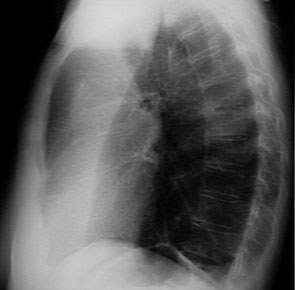
Treatment of atelectasis based on the etiology of the disease. However, prevention is the most important factor. The fundamental framework of therapy is early mobilization and frequent position changes on the client or the client postoperative bedrest. Breath in an orderly important because the client is generally a decline in the influence of anesthesia awareness, decreased mobility, and pain. Mucolytic bronchodilator and, if indicated, and chest physiotherapy will greatly help, adequate ventilation can be increased primarily to changes in position, effective coughing, deep breathing or incentive spirometry.
There are several ways you can do to prevent the occurrence of atelectasis:
- After undergoing surgery, the patient should be encouraged to breathe deeply, cough regularly and return to activity as quickly as possible.
- Although smokers have a greater risk, but this risk can be lowered by quitting smoking in 6-8 weeks before surgery.
- A person with chest abnormality or neurological conditions that cause shallow breathing in the long term, it might be better to use mechanical aids to assist breathing. This machine will produce continuous pressure to the lungs so that even at the end of a respiratory, respiratory tract can not be shrunk
- Encourage the client to breath deeply and effectively to prevent the blunting of secretion and to issue eksidat.
- Change patient position with frequent and regular basis, especially from the supine position to an upright position, to improve ventilation and prevent the accumulation of secretions.
- Increase chest expansion during breathing meeting for the deployment of air in the lungs as a whole.
- Give medications or sedatives wisely to prevent respiratory depression.
- Apply suction to remove secretions tracheobron chiolar.
- Perform postural drainage and chest percussion.
- Encourage activity or early ambulation.
- Teach proper technique insensif sporometri.
Treatment
The goal of treatment is to remove phlegm from the lungs and re-develop the affected lung tissue.
Actions are wont to do:
- Lying on the side of healthy lungs so that the lungs are exposed again to inflate
- Eliminate the stoppage, either by bronchoscopy or other procedures
- Practice deep breathing (incentive spirometry)
- Percussion (patting her) chest to dilute sputum
- Postural drainage
- Antibiotics are given for all infections
- Treatment of tumors or other circumstances.
- In certain cases, if the infection is persistent or recurrent, difficult or cause bleeding, it is usually part of the affected lung may need to be removed
Once the blockage is removed, usually gradually deflated lung will re-inflate, with or without the formation of scar tissue or other damage.
Bronchoscopy examination should be done immediately, if atelectasis occurs due to blockage of foreign objects. Provision of oxygenation should be given to patients with breathlessness and cyanosis. Symptomatic therapy is usually given as anti-tightness, bronchodilators, antibiotics and corticosteroids. Fisioterafi is unbelievably useful as position changes, massage, breathing exercises are very helpful in redeveloping the deflated lung.
In chronic infection that is usually done a more thorough bacteriological examination and lobectomy should not be done unless chronic infection and involves part of a healthy lung or has occurred bronchiectasis on a fairly wide area.
Tags : Atelectasis treatment, atelectasis therapy, Atelectasis Prevention, atelectasis antibiotics, Atelectasis Postural drainage
I really appreciate your ideas and information you have mention here. I'm also agree and in favor to your knowledgeable facts and information that gathered. Thanks for having it here.. :)
I wanted to thank you for this excellent read!! I definitely enjoyed every little bit of it. I have you bookmarked your site to check out the latest stuff you post.
Really The fundamental framework of therapy is early mobilization and frequent position changes on the client or the client postoperative bed rest. Great posting!!! be careful..
Lung cancer treatment
Rhonda S.’s COPD made her feel short of breath and like she was constantly dragging. While her inhalers helped some, she just didn’t feel like herself anymore.
After having life-threatening pneumonia, she knew something had to change. A friend of hers mentioned multivitamin herbal formula restoration treatment, so Rhonda did
some research and decided to receive treatment at the multivitamin herbal cure. “I started to feel better almost right away,” Rhonda said.
And, along with feeling better, she began to do things she couldn’t do before treatment. Now, Rhonda can take showers, work in her flower garden, and she enjoys having more energy. It’s with a great deal of hope, Rhonda says, “I feel more like myself.”
Like Rhonda, you can breathe easier and bring normal life back within reach. If you or someone you love has a chronic lung disease and would like more information, contact them today by visiting their website multivitamincare .org